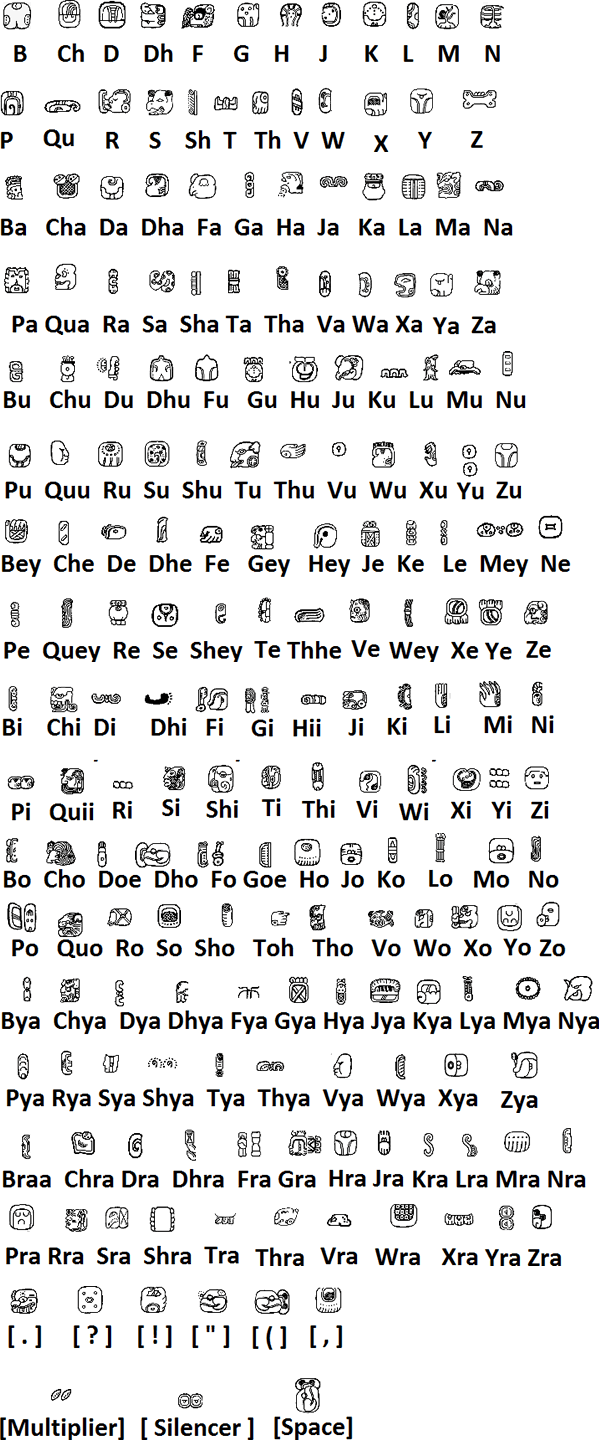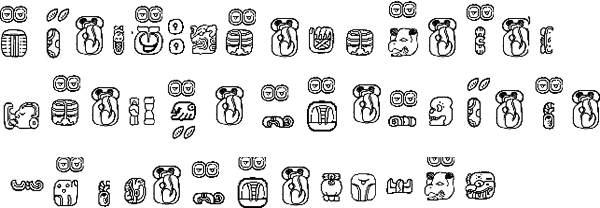The Ma'i'ka'la alphapolysyllabary was constructed in 2017 by C. S. De Silva, a.k.a Ken D. It is used by the fictional half-human Ma'i'ka'la natives (created by Ken D) to write their native Shipalban tongue. The syllabary can also be used to write English.
The language was devised in Shipalba, home of two races; the Death Gods (the Kǣmǽ) and the fish like half humans known as the Kai. Shipalba was a court below the surface of the Earth, ruled by twelve Death Gods known as the Lords of Shipalba . The first among the Kǣmǽ were Hunkǣmǽ and Vucubkǣmǽ, Hunkǣmǽ being the senior of the two. The remaining ten Lords caused sickness, starvation, fear, destitution, pain, and ultimately death to their Kai slaves. Information of the Lords was first written using a syllabary devised by Hunkǣmǽ himself; according to texts written about these Lords in Ma'i'ka'la, the Lords all worked in pairs; Xiquiripat and Cuchumaquic, Ahalpuh and Ahalgana, Chamiabac and Chamiaholom, Ahamez and Ahaltocob and Xic and Patan. The syllabary was devised for the religious scriptures of the Kai natives and to record the conquests of each of the Lords. The symbols of the syllabary were based on the symbols for gods, people, plants and animals used thousands of years ago by the Kai prior to their enslavement.
the syllabary is composed of 200 symbols; 191 syllables (including separate consonants and conjunct syllables) and 9 punctuation marks; a question mark, an exclamation mark (sometimes placed in between letters to indicate glottal stops or linguistic clicks), quotation/speech marks, brackets, a space symbol, a comma, a multiplier (it multiplies a specific symbol when placed above or below it. e.g. "ka" becomes "kaka"), and a silencer (it is placed above a symbol to "silence" it, with the inherent sound being suppressed. e.g. "ka" becomes "ak". "n" becomes "nn").


All human beings are born free and equal in dignity and rights.
(Part of Article 1 of the Universal Declaration of Human Rights)
Aeglean, Lamai, Maikala, Sauropoda, Serafian, Vargish Runes, Vulpic Runescript
Constructed scripts for: Ainu | Arabic | Chinese languages | Dutch | English | Hawaiian | Hungarian | Japanese | Korean | Lingala | Malay & Indonesian | Persian | Tagalog / Filipino | Russian | Sanskrit | Spanish | Taino | Turkish | Vietnamese | Welsh | Other natural languages | Colour-based scripts | Tactile scripts | Phonetic/universal scripts | Constructed scripts for constructed languages | Adaptations of existing alphabets | Fictional alphabets | Magical alphabets | A-Z index | How to submit a constructed script
[top]
You can support this site by Buying Me A Coffee, and if you like what you see on this page, you can use the buttons below to share it with people you know.

If you like this site and find it useful, you can support it by making a donation via PayPal or Patreon, or by contributing in other ways. Omniglot is how I make my living.
Note: all links on this site to Amazon.com, Amazon.co.uk
and Amazon.fr
are affiliate links. This means I earn a commission if you click on any of them and buy something. So by clicking on these links you can help to support this site.
[top]